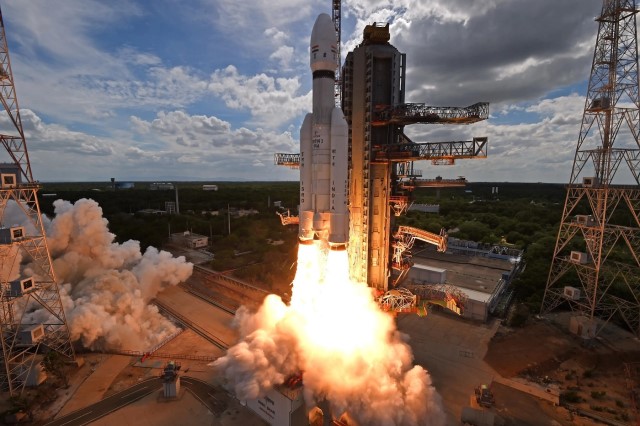Chandrayaan-3: India’s Lunar Mission Continues
INDIA: India’s space agency, the Indian Space Research Organisation (ISRO), has been making strides in space exploration with its Chandrayaan missions. The latest mission, Chandrayaan-3, was launched on July 14, 2023, and is currently in its lunar orbit.
The mission aims to land a rover on the moon’s surface and conduct scientific experiments. The rover will be equipped with instruments to study the moon’s surface, mineralogy, and geology. The mission is also expected to provide valuable data on the moon’s water resources.
Chandrayaan-3’s journey began on July 14, 2023, when the LVM3 M4 vehicle successfully launched the spacecraft into orbit. The spacecraft, in its precise orbit, began its journey to the moon. The health of the spacecraft was reported to be normal.
On July 15, 2023, the first orbit-raising maneuver (Earthbound firing-1) was successfully performed at ISTRAC/ISRO, Bengaluru. The spacecraft was then in a 41762 km x 173 km orbit.
On July 17, 2023, the second orbit-raising maneuver was performed, and the spacecraft was now in a 41603 km x 226 km orbit. On July 22, 2023, the fourth orbit-raising maneuver (Earth-bound perigee firing) was completed, and the spacecraft was now in a 71351 km x 233 km orbit.
On July 25, 2023, the orbit-raising maneuver was performed, and the next firing (TransLunar Injection) was planned for August 1, 2023. On August 1, 2023, the spacecraft was inserted into the translunar orbit, and the orbit achieved was 288 km x 369328 km. Lunar-Orbit Insertion (LOI) was planned for August 5, 2023.
On August 5, 2023, Chandrayaan-3 was successfully inserted into the lunar orbit. The orbit achieved was 164 km x 18074 km, as intended. The very next day, ISRO completed the second lunar-bound maneuver and put the spacecraft into an orbit of 170 km x 4313 km.
On August 9, 2023, ISRO announced that Chandrayaan-3’s orbit was reduced to 174 km x 1437 km following a maneuver. Five days later, the mission entered the orbit circularization phase with the fourth lunar-bound maneuver on August 14, placing the spacecraft into an orbit of 151 km x 179 km.
On August 16, 2023, the spacecraft was fired, and it is now in an orbit of 153 km x 163 km. The mission is currently in the orbit circularization phase, and the spacecraft is in a circular orbit of 151 km x 179 km.
The next important milestone for the mission is the lander and propulsion module separation, which is planned for later today, August 17, 2023. The separation will set the stage for the lander’s descent to the moon’s surface.
The lander, named Vikram, is designed to land on the moon’s surface and conduct scientific experiments. The lander is equipped with instruments to study the moon’s surface, mineralogy, and geology. The lander will also carry a rover, which will be deployed on the moon’s surface to conduct further experiments.
The mission’s success will depend on the lander’s safe landing on the moon’s surface. The landing is expected to take place in the next few days, and the ISRO is closely monitoring the mission’s progress.
Chandrayaan-3 is a crucial mission for India’s space program, and its success will mark a significant milestone in the country’s space exploration efforts. The mission is expected to provide valuable data on the moon’s resources and pave the way for future missions to the moon and beyond.
In conclusion, Chandrayaan-3’s journey to the moon has been eventful, with several successful maneuvers and orbit insertions. The mission is currently in the orbit circularization phase, and the lander and propulsion module separation is planned for later today. The ISRO is closely monitoring the mission’s progress, and the success of the mission will mark a significant milestone in India’s space exploration efforts.


